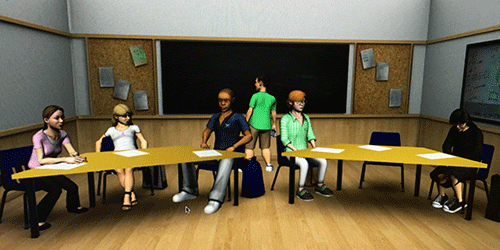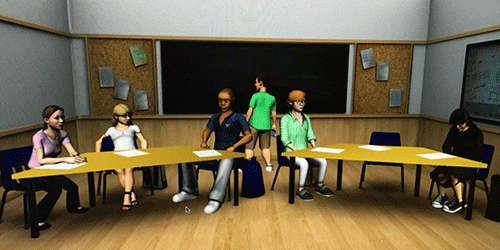A Virtual Physics Classroom
Just as pilots train in flight simulators, physics teachers can hone their skills in classroom simulators. Of course, explaining Newton’s laws to teenagers is a little less challenging than landing a 747. Still, a new study shows that undergraduate teaching assistants can gain valuable experience practicing their lessons in front of virtual student “avatars.”
Many teachers and teachers-in-training rehearse their classroom presentations in front of fellow peers or other volunteers. However, this role-playing is sometimes not very realistic. The student actors may struggle with pretending to be uninformed on the subject matter, or they may balk at hearing the same lecture multiple times. For these reasons, educators have begun developing classroom simulators with student avatars, whose initial knowledge can be programmed and who don’t complain about repeat performances.
Several studies have shown that educational professionals can improve their teaching by rehearsing in front of a classroom simulator. Jacquelyn Chini and her colleagues from the University of Central Florida, Orlando, wanted to assess whether the same benefits could be accrued by learning assistants (LAs), undergraduate students who provide additional instruction to fellow classmates. Chini and colleagues enlisted 14 LAs to give five-minute lessons in the TeachLive simulator, which is currently in use in 50 learning institutions. The simulations occurred in regular classrooms, with a monitor showing a group of high-school-age student avatars, who could speak with and respond to the teacher. Most of the LAs rated the experience as “realistic,” which suggests they were behaving as with real students. Indeed, the researchers found that the LAs posed leading questions to the avatars and even elicited group involvement, which are some of the teaching methods that the LAs are encouraged to use.
This research is published in Physical Review Physics Education Research.
–Michael Schirber





